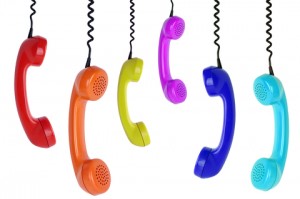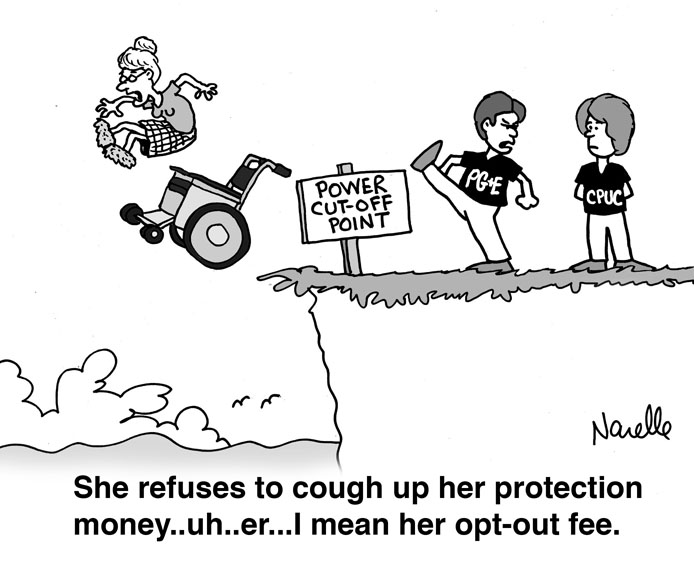Category: Legal
California court ruling upholds Wi-Fi disability case
 A California appeals court has ruled that Wi-Fi sickness, also know as EHS, merits disability accommodation.
A California appeals court has ruled that Wi-Fi sickness, also know as EHS, merits disability accommodation.
On February 18, 2021 a decision was entered in the case of Brown v. Los Angeles Unified School District (LAUSD) at the 2nd district Court of Appeals in California. The court concluded that “Brown adequately pled her cause of action for failure to provide reasonable accommodation for her disability.” They reversed a lower courts decision that had ruled in favor of LAUSD.
Brown is a teacher in the LAUSD school district. After the school upgraded their Wi-Fi system Brown experienced, “chronic pain, headaches, nausea, itching, burning sensations on her skin, ear issues, shortness of breath, inflammation, heart palpitations, respiratory complications, foggy headedness, and fatigue, all symptoms of Microwave Sickness or EHS.”
Brown sued LAUSD after efforts to obtain reasonable accommodations failed. The trial court ruled in favor of LAUSD. Brown appealed that decision and won. The appeals court based their decision on California’s Fair Employment and Housing Act (FEHA) which provides disability protections independent of, and above and beyond the Americans with Disabilities Act (ADA). Excerpt from the Decision:
“The Legislature has stated its intent that “physical disability” be construed so that employees are protected from discrimination due to actual or perceived physical impairment that is disabling, potentially disabling, or perceived as disabling or potentially disabling.”
“FEHA states a “physical disability” includes, but is not limited to, “any physiological disease, disorder, condition, cosmetic disfigurement, or anatomical loss that does both of the following: Affects one or more of the following body systems: neurological, immunological, musculoskeletal, special sense organs, respiratory, including speech organs, cardiovascular, reproductive, digestive, genitourinary, hemic and lymphatic, skin and endocrine…Limits a major life activity…`Major life activities’ shall be broadly construed and includes physical, mental, and social activities and working.”
You can read the decision here: Brown vs LAUSD
JML Law Wins Appeal in ‘Unprecedented’ Disability Case Against LAUSD For Failure to Accommodate Teacher With Electromagnetic Hypersensitivity https://www.accesswire.com/viewarticle.aspx?id=637661&token=hzivngfkuma2h2xz6rhu
City of Sebastopol defends senior residents against PG&E smart meters

A majority of residents from Fircrest Mobile Home Park in Sebastopol signed a petition asking the City of Sebastopol to help them avoid the installation of “smart meters” and to retain analog meters in their senior community. PG&E has been working in the mobile home park since July replacing utility lines in order to switch all homes from sub-metered analogs to smart meters.
In support of the residents’ petition, the City of Sebastopol sent a letter to the mobile home park management with a copy to PG&E, with a reminder that in 2013 the City of Sebastopol adopted a temporary moratorium on smart meter installations and related equipment.
The letter stated that the park’s initiation of the electrical work has resulted in residents facing the need to meet an unanticipated fee in order to “opt out” of smart meter installations that they did not request. They ask, “The Sebastopol City Council asks your cooperation in either paying the opt fee for the residents of the park, and/or your request of PG&E that they retain the analog meters.”
The letter pointed out that Fircrest Park’s residents can be considered “Captive” in the mobile home park by reason of their dual status as both home owners and tenants which the City maintains is both unfair and possibly a violation of the protections of the California Mobile Home Residency Law.
81 residents of Fircrest Mobile Home Park have signed the petition (from 68 out of 87 total households) to oppose smart meters. Many believe smart meters would negatively affect the aesthetics and significantly decrease the value of their home. As park residents learned more about how smart meters emit pulsed microwave radiation 24/7 very near to their bedrooms and living quarters, they have expressed a growing concern about the negative health and safety impacts of these devices. The fact that Fircrest Mobile Home Park is a high density senior residence adds to the concern about the cumulative effect of so many microwave emitting devices in such a small area.
Peer-reviewed scientific research shows that exposure to wireless smart meters is associated with increased health problems. Dr. Martin Pall reports, “18 more recent epidemiological studies, provide substantial evidence that microwave EMFs from cell/mobile phone base stations, excessive cell/mobile phone usage and from wireless smart meters can each produce similar patterns of neuropsychiatric effects, with several of these studies showing clear dose-response relationships…Among the more commonly reported changes are sleep disturbance/insomnia, headache, depression/depressive symptoms, fatigue/tiredness, dysesthesia, concentration/attention dysfunction, memory changes, dizziness, irritability, loss of appetite/body weight, restlessness/anxiety, nausea, skin burning/tingling/dermographism and EEG changes.” See also this smart meter study.
Media and numerous customer complaints reported electrical costs skyrocketed after smart meter installation. Smart meter malfunction has also been implicated in smart meter fires and burned out appliances.
Sebastopol’s General Plan includes protective electromagnetic field (EMF) policies; for example Community Health and Wellness Policy 4-2: “minimize unsafe EMF radiation levels near sensitive areas such as schools, hospitals, playgrounds, high density residential, and libraries when planning for electrical transmission facilities repair and new construction.” (page 10-6 in the General Plan.)
11/27/2019 UPDATE: Gas analog meters have been installed and electric analog meters are currently being installed. Thank you PG&E!
Take action to stop 5G Senate Bill S.3157
The Federal government is once again trying to take away local authority over cell towers. Senators John Thune (R-SD) and Brian Schatz (D-HI) introduced the STREAMLINE Small Cell Deployment Act (S.3157).
S. 3157 is similar to a California Senate bill, SB 649, which would have stripped local authority over cell towers. Governor Brown vetoed SB 649 in October 2017.
The National League of Cities (NLC) opposes S. 3157. They wrote, “Despite urging from NLC and other local government advocates during the bill’s drafting phase, many preemptive provisions remain in the bill, including limiting the actions local governments can take on small cell wireless facility siting in an effort to make deployments cheaper, faster, and more consistent across jurisdictions.”
Here’s an easy way to take action. They NLC will send a letter directly to your representatives in Congress for you. You will need to insert your zip code, (and maybe your full address), and then the letter template will appear.
PLEASE NOTE: Instead of using their letter, which has statements of support for small cells, copy and paste the words below.
As a constituent, I am writing to express my opposition to the “Streamlining The Rapid Evolution And Modernization of Leading-edge Infrastructure Necessary to Enhance (STREAMLINE) Small Cell Deployment Act” (S. 3157).
S. 3157 is similar to a California bill (SB 649) which would have created a state mandated system of cell towers and eliminated local review and safety oversight. SB 649 was opposed by 300 cities, 47 counties and over 100 community, planning, health, environment and justice organizations. SB 649 was vetoed SB 649 by Governor Brown on October 15, 2017.
The threat of public and environmental harm from wireless radiation is real and growing. Local control is needed to ensure community safety, welfare and compliance with federal, state, and local laws.
Peer-reviewed published science shows wireless radiation harms public health and nature. Health effects include: fatigue, headaches, sleep problems, anxiety, ringing in the ears, heart problems, learning and memory disorders, increased cancer risk, and more. Children, the ill, and the elderly are more vulnerable.
International independent scientists are calling for biologically-based public exposure standards and reducing wireless radiation.
S. 3157 represents a direct affront to traditionally-held local authority. S. 3157 introduces an unnecessary, one-size-fits-all preemption of local jurisdiction. The bill also imposes unfair and inappropriate timelines on local governments.
For more information see this joint letter to Congress asking you to oppose any and all bills related to 5G and wireless radiation expansion: http://emfsafetynetwork.org/wp-content/uploads/2017/11/Letter-to-Congress-2017-1.pdf
Thank you!
Save copper telephone lines!
 EMF Safety Network and Ecological Options Network filed these comments to the Federal Communication Commission (FCC) in WT Docket 17-84 on why copper lines must be retained and maintained. The FCC is discussing “retirement” of the copper line telephone system.
EMF Safety Network and Ecological Options Network filed these comments to the Federal Communication Commission (FCC) in WT Docket 17-84 on why copper lines must be retained and maintained. The FCC is discussing “retirement” of the copper line telephone system.
1. Copper landline phones save lives.
Copper landlines work when the power is out, fiber optics don’t. In an emergency, with no power, no phone, and no 911 services, people will be at risk for life threatening situations. Who will pay the price for this aggressive push to end copper landline service?
Seniors
Businesses
People with Electromagnetic Hypersensitivity (EHS)
Low income people
Residents of rural areas
Hearing impaired
People who want a choice
2. Copper landline phone systems cost less.
A fiber optic VOIP system requires internet service, computer, router, VOIP device, plus a phone. A VOIP system costs more to purchase, maintain, and replace worn out devices. A VOIP uses more electricity. A copper landline phone is simpler and more cost effective because it only requires a phone.
3. Cell phones are not safe substitutes for corded copper landline phones.
Independent peer-reviewed published science links cell phone radiation to the risk of adverse health impacts, including cancer.
The National Toxicology Program found an increase in brain tumors from exposure to cell phone radiation. http://ntp.niehs.nih.gov/results/areas/cellphones/index.html
The BioInitiative Report reviewed 2000 peer reviewed published studies and found an increased risk of brain cancer from cell and cordless phone radiation. www.bioinitiative.org
Independent scientists who have published peer-reviewed studies warn about the safety risks of cell phones, cell towers and other devices that emit radiation. www.emfscientist.org
IARC, an arm of the World Health Organization classifies cell phone radiation as a possible carcinogen. http://www.iarc.fr/en/media-centre/pr/2011/pdfs/pr208_E.pdf
Brain tumors are the leading cause of cancer-related deaths in children age 0-14 http://www.abta.org/about-us/news/brain-tumor-statistics/
Berkeley cell phone ordinance wins again!
The city of Berkeley won against the powerful CTIA, the wireless industry association who appealed Berkeley’s ordinance which requires cellphone retailers to provide customers with this notice:
“To assure safety, the Federal Government requires that cell phones meet radiofrequency (RF) exposure guidelines. If you carry or use your phone in a pants or shirt pocket or tucked into a bra when the phone is ON and connected to a wireless network, you may exceed the federal guidelines for exposure to RF radiation. Refer to the instructions in your phone or user manual for information about how to use your phone safely.”
The appeal was heard by the Ninth Circuit Court of Appeals. The judges determined that “there was no irreparable harm based on the First Amendment or preemption, that the balance of equities tipped in Berkeley’s favor, that the ordinance was in the public interest, and that an injunction would harm that interest.”
More information about the ordinance and the lawsuit here: http://www.saferemr.com/2014/11/berkeley-cell-phone-right-to-know.html
Privacy International & the Electronic Frontier Foundation Raise Concerns About Privacy Implications of Smart Meters
Privacy International (PI) and the Electronic Frontier Foundation (EFF) filed an amicus brief in the case of Naperville Smart Meter Awareness v. City of Naperville before the United States Court of Appeals for the 7th Circuit.
PI and EFF argue that usage data from smart electricity meters differs quantitatively and qualitatively from analog electricity meters, revealing intimate details regarding a person’s private in-home activities.
PI and EFF argue that an Illinois District Court’s decision that there is no reasonable expectation of privacy in aggregate electrical usage data, regardless of whether the data is collected by a smart meter or analog meter, is flawed and that the Court’s decision should be reversed.
Patterns generated by smart meter data can be used to infer how many individuals reside in a home as well as their activities, habits, and rhythms of movement, including when they leave their home and when they go to sleep.
Smart meter data can even reveal which appliances are functioning at a given time, allowing one to infer, for example, when residents consume meals, take showers, watch TV, and use exercise equipment.
Privacy International Legal Officer Scarlet Kim said: “The transition from analog meters to smart meters — from a single monthly reading of energy usage to thousands of data points per month — transforms a blunt record of kilowatts consumed into a deeply personal snapshot of a person’s life. The data protection and privacy implications of collecting this data are not confined to Illinois but resonate around the world.”
Electronic Frontier Foundation Staff Attorney Jamie Williams said: “The lower court made false assumptions about how smart meter technology works, and its decision is a threat to the privacy of the 57 million and counting American homes with this new technology.”
For more information: https://smartgridawareness.org/2017/02/28/privacy-advocacy-groups-amicus-brief-on-smart-meters/
CA Department of Public Health sued for hiding cell phone radiation warnings
Dr. Joel Moskowitz, Director of UC Berkeley School of Public Health has sued the California Department of Public Health (CDPH) for failing to provide a tax payer funded study on cell phone radiation risks. The CDPH refused to comment on the case.
Attorney Claudia Polsky states this is “tax payer funded scientific research over a period of years resulted in a review of the scientific literature about cell phone risks and the production of a document that was supposed to reach the public informing people about how to reduce risks from cell phone use.”
Dr. Moskowitz was asked why the state is trying to suppress the document. He stated, “They [CDPH] claim that they are concerned that this would lead to chaos and confusion among the public. I suspect that they were afraid of the reaction of the telecommunications industry should they publish this document; in fact, they even argued that in their brief.”
UPDATE: In response to media pressure the CDPH pre-released the cell phone advisory to the SF Chronicle. Here it is: CDPH cell phone document April 2014
